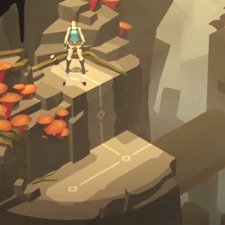Yesterday hundreds of men and women gathered at the University of Westminster in London for the European Women in Games 2015 conference.
Crammed into lecture theatres and tucked into seminar rooms, industry leaders and fledgling games development students alike shared their experiences of working as a woman in the games industry
But amid the hustle and bustle of countless bustles a question arose: why do we need a conference like this anyway?
In 2015 womenkind has come a long way – we have equal education, we won the right to vote, the birth control pill, and haven’t been burnt as witches since 1725.
So is a Women in Games conference counterproductive? Rather than dismantling gender barriers, could a gender-specific conference put them up instead?
Breaking barriers
The answer, I believe, is no.Despite how far we’ve come, we’re not at the end of the journey yet.
While over half of all gamers are adult women, just 12% of game developers are female.
While over half of all gamers are adult women, according to research from Tiga, just 12 percent of game developers and 3 percent of game programmers are female.
Now, this fact isn’t a revelation – indeed the headlines have been filled in recent years with similar statistics.
But since this article allows me the kind of monologue that one might deliver, in a slightly slurred yet impassioned way, to a minicab driver who is doing the best to ignore you and turn up ‘Alone’ by Heart on Magic FM, it’s the perfect opportunity to explore gender in our industry and how we go about balancing the scales.

It’s a well-known fact that IT as it has been taught in schools for years has been uninspiring and irrelevant for both genders. This has meant that many who do forge careers in video game development are led into doing so through the hobbies they explored in their spare time as teenagers and young adults: coding, video games, building robot kits and tinkering with PCs, to name a few.
Many young girls find themselves socially ostracised for playing video games.
It is unfortunate then that in general it is boys – not girls – who are traditionally associated with those pastimes.
From the macho, gun wielding heroes that plaster advertising posters to the geeky male stereotypes in cartoons that we watch as children, both genders are conditioned to see video games technology as “other” to women. A gaming woman in popular culture is the odd one out. Something where it shouldn’t be. The unexpected item in the bagging area.
Opening doors
It’s fantastic that young men are driven outside of the classroom to build the skills required to innovate groundbreaking new ideas in gaming, but how can young girls do the same if they don’t receive the same amount of cultural encouragement?
The result is that many young girls find themselves socially ostracised for playing video games.
On a panel at the WIGJ conference, Yogscast co-founder and prominent YouTuber Hannah Rutherford recalled how at her all-girl’s school she was marginalised and teased for preferring to wield a virtual battleaxe than a real-world lipstick.

Through lack of support, those young women who are interested in video games development often find themselves ill-equipped with the skills to succeed in the sector, and either end up in less technical roles or in a different career altogether.
This strikes me as a waste, kind of like hiring Patrick Stewart to read the notes of last week’s PTA meeting. How can companies like Sony and Microsoft be fully informed about the world’s gaming trends when there’s limited input from 52 per cent of the global population?
We need to give young girls the same opportunities to explore the industry.
So what to do? For starters, we need to scrub our brains of the idea that playing video games is a nerdy pastime – for both boys and girls. It’s not geeky to immerse yourself in a cinematic storyline, or follow a TV series for hours, so why is it different for video games?
Secondly, we need to give young girls the same opportunities to explore the industry.
Buy them a Nintendo DS, as well as their brother; bolster technical educations for both genders in school; have children play games with interesting, dynamic female characters working alongside the male ones.
(Coincidentally, a recent list by Jef Rouner of Housten Press counted just 19 black, playable female characters in the entire video game canon.)
And add your voice to the women in games debate, go to conferences supporting gender issues, and tell people that “it’s time for things to change.”
Really, for preference, I would like you to stand on a chair and shout “it’s time for things to change” – but this is simply because I believe that everything is more exciting if you stand on a chair to do it.





















